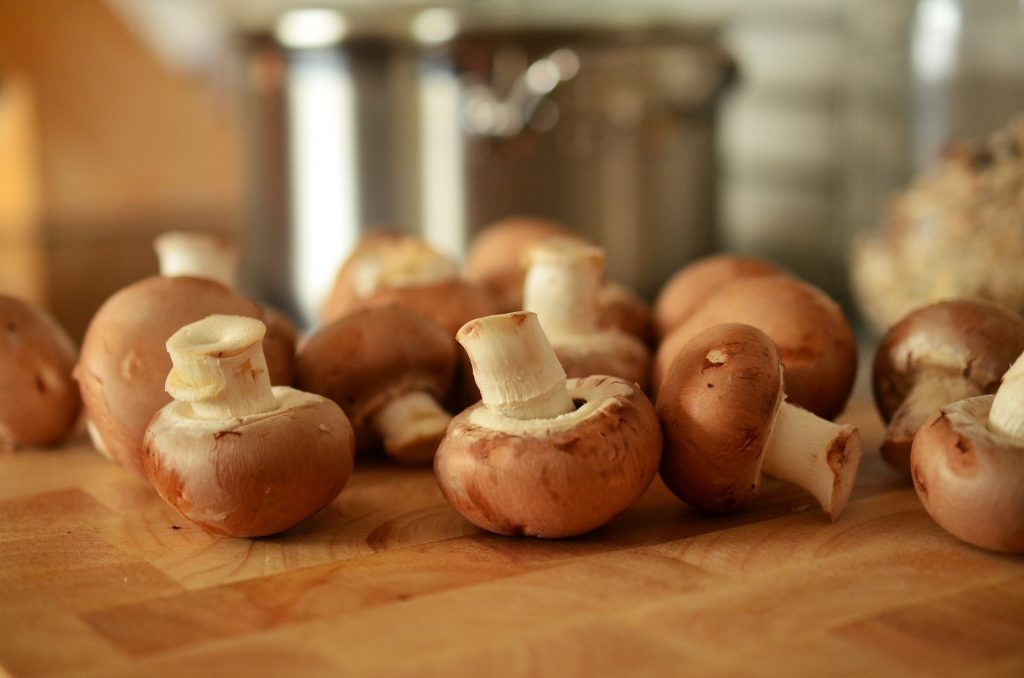 Evidence suggests that vitamin D insufficiency is common amongst Western populations. This stems partly from a diet that contains a low concentration of vitamin D and from a lack of sun exposure. Those who are at the greatest risk are those with the poorest diet and those with the lowest exposure to sun. The elderly and infirmed are therefore perhaps two of the most at risk groups. However, many studies have shown that apparently healthy individuals are often vitamin D insufficient amongst Western populations. It is not easy to incorporate high intakes of vitamin D in the diet because foods containing vitamin D are no commonly eaten. Fish oils are perhaps the best source of vitamin D, but they are rarely consumed by Westerners. Mushrooms are an interesting source of vitamin D, because they are high in ergocalciferol, also called vitamin D2. Exposure of mushrooms to ultraviolet C and ultraviolet B radiation can significantly increase the conversion of provitamin D to ergocalciferol in mushrooms.
Evidence suggests that vitamin D insufficiency is common amongst Western populations. This stems partly from a diet that contains a low concentration of vitamin D and from a lack of sun exposure. Those who are at the greatest risk are those with the poorest diet and those with the lowest exposure to sun. The elderly and infirmed are therefore perhaps two of the most at risk groups. However, many studies have shown that apparently healthy individuals are often vitamin D insufficient amongst Western populations. It is not easy to incorporate high intakes of vitamin D in the diet because foods containing vitamin D are no commonly eaten. Fish oils are perhaps the best source of vitamin D, but they are rarely consumed by Westerners. Mushrooms are an interesting source of vitamin D, because they are high in ergocalciferol, also called vitamin D2. Exposure of mushrooms to ultraviolet C and ultraviolet B radiation can significantly increase the conversion of provitamin D to ergocalciferol in mushrooms.

Artificial lighting or sun exposure can significantly increase the ergocalciferol concentrations in edible mushrooms. Following exposure to ultraviolet C and ultraviolet B, provitamin D is converted to ergocalciferol (vitamin D2) in a similar process to that found in the skin of humans. Wild mushrooms contain high levels of vitamin D because of their sunlight exposure, but cultivated mushrooms can be limited in their vitamin D content due to a lack of exposure to the required wavelengths of light. Feeding mushrooms with a high content of vitamin D has been shown to have both immune enhancing and bone enhancing effects on animals, suggesting that the vitamin D content of mushrooms is bioavailable. Increasing intakes of ergocalciferol increases plasma levels of 25-hydroxyvitamin D2, but at the same time decreases concentrations of 25-hydroxyvitamin D3. This effect is also seen with supplements of ergocalciferol. The ability of sources of ergocalciferol may therefore depend on the vitamin D status of the individual, with deficient and insufficient individuals benefiting from supplementation to a far greater extent than those replete with vitamin D.
Researchers have investigated the effects of ultraviolet exposed mushrooms on the plasma levels of 25-hydroxyvitamin D [25(OH)D] in humans. Plasma levels of 25(OH)D are considered the best indicator of vitamin D status as it is the active biological metabolite of vitamin D. Studies feeding human subjects ultraviolet exposed mushrooms have shown inconsistent results. For example 3 European studies have shown an increase in plasma levels of 25(OH)D in subjects fed ultraviolet exposed mushrooms, whereas 3 US studies have shown no change. In addition, the response to to mushrooms does vary considerably between individuals. Taking the results as a whole, in subjects with low levels of plasma 25(OH)D, mushrooms may increase 25(OH)D2 (+24.2 nmol/L) but lower 25(OH)D3 (-12.6 nmol/L), resulting in an overall increase. However, in subjects with good vitamin D status the rise in 25(OH)D2 (+18.3 nmol/L) is not great enough to offset the reduction in 25(OH)D3 (-13.6 nmol/L), which results in no net gain in vitamin D.
Eat Well, Stay Healthy, Protect Yourself
RdB
